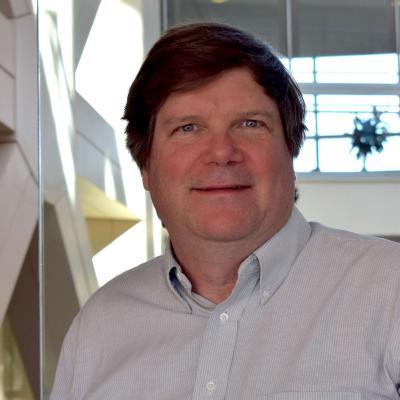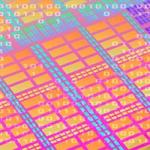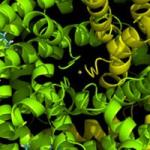
Research Topics
Dr. Brooks' research group have been involved in CHARMM development and oversight for more than 30 years. His research efforts have involved the development of new methods to assist the interpretation of experiment, for integrating multiple computational models into a single (multiscale) computation, the development of methods for normal mode analysis of large bio-macromolecules, new enhanced sampling methods, new restraint methods, and techniques for finding reaction pathways in complex systems. All of these developments are integrated into CHARMM, a complete tool for complementing and enhancing experimental research.
Biography
Bernard Brooks earned an S.B. in chemistry from Massachussets Institute of Technology in 1975 and a Ph.D. in chemistry from University of California, Berkeley in 1979. He did his postdoctoral at Harvard University under the supervision of the Dr. Martin Karplus and he joined the NIH in 1990 as a staff fellow in the Division of Computer Research and Technology at the National Institutes of Health. In 1998 we become the Chief of Molecular Graphics and Simulation Section of the Laboratory of Structural Biology and in 1998 he occupied the position of Chief of the Computational Biophysics Section of the Laboratory of Biophysical Chemistry of the National Heart, Lung and Blood Institute. Since 2005 he is the Chief of the Laboratory of Computational Biology at the NHLBI. In 2008 he receive the NHLBI Oustanding Mentor Award and in 2010 he got the NIH Merit Award in recognition of defining the needs of supercomputing power to meet contemporary scientific needs at NIH.
Selected Publications
- Hwang W, Austin SL, Blondel A, Boittier ED, Boresch S, Buck M, Buckner J, Caflisch A, Chang HT, Cheng X, Choi YK, Chu JW, Crowley MF, Cui Q, Damjanovic A, Deng Y, Devereux M, Ding X, Feig MF, Gao J, Glowacki DR, Gonzales JE 2nd, Hamaneh MB, Harder ED, Hayes RL, Huang J, Huang Y, Hudson PS, Im W, Islam SM, Jiang W, Jones MR, Käser S, Kearns FL, Kern NR, Klauda JB, Lazaridis T, Lee J, Lemkul JA, Liu X, Luo Y, MacKerell AD Jr, Major DT, Meuwly M, Nam K, Nilsson L, Ovchinnikov V, Paci E, Park S, Pastor RW, Pittman AR, Post CB, Prasad S, Pu J, Qi Y, Rathinavelan T, Roe DR, Roux B, Rowley CN, Shen J, Simmonett AC, Sodt AJ, Töpfer K, Upadhyay M, van der Vaart A, Vazquez-Salazar LI, Venable RM, Warrensford LC, Woodcock HL, Wu Y, Brooks CL 3rd, Brooks BR, Karplus M. CHARMM at 45: Enhancements in Accessibility, Functionality, and Speed. J Phys Chem B. 2024;128(41):9976-10042.
- Ghorbani M, Prasad S, Klauda JB, Brooks BR. GraphVAMPNet, using graph neural networks and variational approach to Markov processes for dynamical modeling of biomolecules. J Chem Phys. 2022;156(18):184103.
- Hudson PS, Aviat F, Meana-Pañeda R, Warrensford L, Pollard BC, Prasad S, Jones MR, Woodcock HL, Brooks BR. Obtaining QM/MM binding free energies in the SAMPL8 drugs of abuse challenge: indirect approaches. J Comput Aided Mol Des. 2022;36(4):263-277.
- Gonzales JE 2nd, Hwang W, Brooks BR. A parallel CUDA implementation of the Gauss-Legendre-spherical-t method for electrostatic interactions. J Chem Phys. 2025;162(22).
- Prasad S, Aviat F, Gonzales JE 2nd, Brooks BR. apoCHARMM: High-performance molecular dynamics simulations on GPUs for advanced simulation methods. J Chem Phys. 2025;162(18).
Related Scientific Focus Areas
This page was last updated on Wednesday, September 3, 2025

